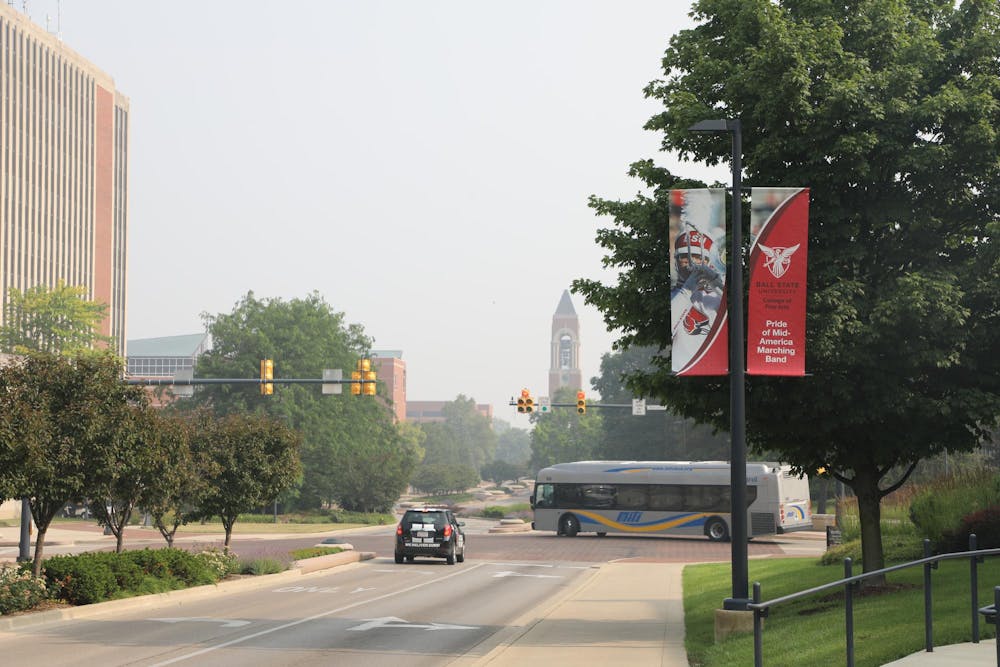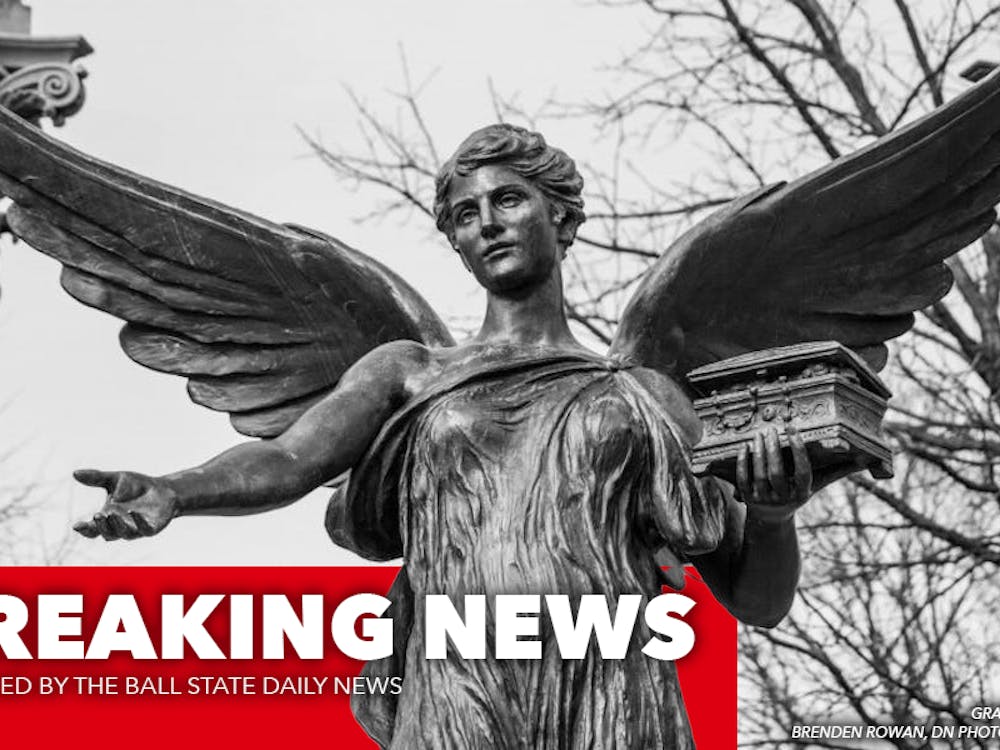DETROIT (AP) — The Detroit area woke up Wednesday to some of the worst air quality in the United States as smoke from Canada's wildfires settled over most of the Great Lakes region and unhealthy haze spread southward, as far as Missouri and Kentucky.
The Environmental Protection Agency’s AirNow.gov site showed Detroit in the “hazardous” range and warned that “everyone should stay indoors and reduce activity levels.”
Drifting smoke from the wildfires has lowered curtains of haze on broad swaths of the United States, pushing into southern Illinois, Indiana and Ohio, and moving into parts of West Virginia. The AirNow.gov site listed air quality Wednesday in Cleveland, Ohio, Indianapolis, Chicago, and Pittsburgh, Penn., as “very unhealthy.” A wider circle of unhealthy air spread into St. Louis, Mo., and Louisville, Ky.
“Another round is going through western New York, western Pennsylvania later today,” National Weather Service meteorologist Byran Jackson said Wednesday. “And then that continues over the northern Mid-Atlantic. It will persist there into Thursday.”
“There’s particularly poor air quality ... over southern Wisconsin, Illinois, central Indiana, and also another area over southeast Michigan, Detroit and northeast Ohio around Cleveland,” Jackson added. “This is particularly thick smoke.”

In Minnesota issued a record 23rd air quality alert for the year through late Wednesday night, as smoky skies obscured the skylines of Minneapolis and St. Paul. Michigan also issued an air quality alert, and Wisconsin put out an air quality advisory.
In Chicago, a visit to the Lincoln Park Zoo became a different sort of adventure. “Just driving into the zoo ... you could just see around the buildings, kind of just haze,” visitor Shelly Woinowski said Tuesday.
Chicago Mayor Brandon Johnson urged young people, older adults and residents with health issues to spend more time indoors while unsafe conditions continue, and pledged "swift action to ensure that vulnerable individuals have the resources they need to protect themselves and their families.”
Across Canada, 490 fires are burning, with 255 of them considered to be out of control.
The Canadian Interagency Forest Fire Centre reported Monday that 76,129 square kilometers (29,393 square miles) of land including forests has burned across Canada since Jan. 1. That exceeds the previous record set in 1989 of 75,596 square kilometers (29,187 square miles), according to the National Forestry Database.
Some wet weather in Quebec gave firefighters a chance to get ahead of some of the flames, but there hasn't been enough rain to extinguish the wildfires. Environment Canada meteorologist Simon Legault said he expects rain to stop falling by Wednesday morning in the regions most affected by forest fires. Many of the fires burning in Canada are in Quebec and Ontario, nearer to North America's most populated areas than western wilderness areas.
Earlier this month, massive fires burning stretches of Canadian forests blanketed the northeastern United States and the Great Lakes region with smoke, turning the air yellowish gray and prompting warnings for people to stay inside and keep windows closed.
The small particles in wildfire smoke can irritate the eyes, nose and throat, and can affect the heart and lungs, making it harder to breathe. Health officials say it’s important to limit outdoor activities as much as possible to avoid breathing in the particles.
U.S. President Joe Biden has noted that hundreds of American personnel have joined Canadians to fight the fires, which he has described as clear evidence of climate change.
The warming planet will produce hotter and longer heat waves, making for bigger, smokier fires, said Joel Thornton, professor and chair of the department of atmospheric sciences at the University of Washington.
“You can smell it bad,” said Priti Marwah, who was beginning a run along Chicago's lakefront on Tuesday. "I run a hundred miles a week, so this is going to be dangerous today. You can feel it ... just even parking right there and coming out, I can feel it in my lungs.”
The Minnesota Pollution Control Agency said a cold front will bring cleaner air from the west across the Great Lakes region by early Thursday.
The coming respite meant little to Dan Daley Tuesday in St. Louis Park, Minnesota — he said “it’s kind of miserable some days because you can’t spend a lot of time outside.”
____
Associated Press contributors include Trisha Ahmed and Steve Karnowski in Minneapolis, Ken Kusmer in Indianapolis and Julie Walker in New York.





